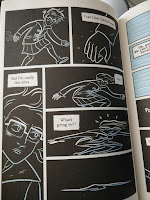Delphi Complete Works of Vincent van Gogh (2014)
, 04 November 2017
"I feel inexpressibly melancholy without my work to distract me, as you will understand, and I must work and work hard, I must forget myself in my work, otherwise it will crush me."
This book devoted to Vincent Van Gogh --part of the Delphi Classics series of art masters-- is what one expects a book aimed to the general public to be: affordable, informative, comprehensive, and most importantly, true to the artist. The book has 4000+ pages and everything you need to know, to get to know and know better the Dutch artist.
The first section of the book contains a selection of Vincent Van Gogh's renowned paintings, with some extracted images of details in them, and a brief introductory commentary to each one; the whole list of paintings by Vincent, chronologically ordered and grouped by the different places where he lived and painted, follows; an alphabetical list of his paintings completes the first section of the book. The second section contains the complete unabridged correspondence of Van Gogh, 800+ letters, chronologically organised, translated into English by her sister-in-law Johanna van Gogh-Bonger in 1914. Just having the complete correspondence blows my mind. The book ends with a biography of the artist written by Johanna as well. All of this for less than three bucks on Kindle format. That is a loud wow.
Overall, this a very satisfying book for the general public, who won't be expecting or demanding a polished translation, a comprehensive study and edition of the texts, more in-depth analysis or further commentary than that already there. Through the extensive catalogue of paintings one obtains an overall view of the themes, palette, people, and techniques that Van Gogh used. Through his correspondence one gets to know the real man behind the popular artist, a fascinating human being who, at least to me, was as good as a writer as a painter, a man with a great depth, soul and humanity, a human being not the pop-star artist he has come to be.
Although I really recommend this book to the general public, I would like to point out a few things that you should know before you purchase it:
> This is not a complete collection of Vincent's artworks, just
of his paintings, as none of his sketches (which are some of
my favourite pieces), are included.
> The quality of the images in the Kindle edition goes from very good to bad and everything in between. One can individuate each painting by double tapping the image; yet, it is not always clear, neat or of good quality. I would have loved having the images in bigger resolution and occupying a bigger portion of the page.
> Some of the paintings were forever lost during WW2, so the only thing remaining are the black and white photos we have in the book.
> Vincent's correspondence, although complete and readable is full of French sentences and expressions that aren't always translated.
> The quality of the images in the Kindle edition goes from very good to bad and everything in between. One can individuate each painting by double tapping the image; yet, it is not always clear, neat or of good quality. I would have loved having the images in bigger resolution and occupying a bigger portion of the page.
> Some of the paintings were forever lost during WW2, so the only thing remaining are the black and white photos we have in the book.
> Vincent's correspondence, although complete and readable is full of French sentences and expressions that aren't always translated.
> It would have been great having some of the paintings mentioned in
the letters cross-referenced and linked back and forward to the images
on this book, but they are not.
> It would have been great having those letters with sketches in
them, which are many, being reproduced with the sketches, or at least
the sketches reproduced separately and linked to the letters, but they are not.
I would suggest, if a second edition of this book is going to be prepared on Kindle, the following things:
> I would love having higher resolution images, and each image being reproduced in a larger format on each page.
> Preparing an analytical index of the correspondence.
> Placing the alphabetical list of paintings at the end of the book.
> Work on the lateral menu on Kindle for Android, which, in its current format, is not usable because of the huge amount of information listed there. To be usable, it should have been produced in more collapsible structured format, a big epigraph with a sub-epigraph and a sub-sub epigraph etc. Many things that should not be in that index are there.
> Prepare a short glossary with a synopsis of each of the main people mentioned in the correspondence and/or repeatedly painted by Van Gogh.
> I would love having higher resolution images, and each image being reproduced in a larger format on each page.
> Preparing an analytical index of the correspondence.
> Placing the alphabetical list of paintings at the end of the book.
> Work on the lateral menu on Kindle for Android, which, in its current format, is not usable because of the huge amount of information listed there. To be usable, it should have been produced in more collapsible structured format, a big epigraph with a sub-epigraph and a sub-sub epigraph etc. Many things that should not be in that index are there.
> Prepare a short glossary with a synopsis of each of the main people mentioned in the correspondence and/or repeatedly painted by Van Gogh.







































